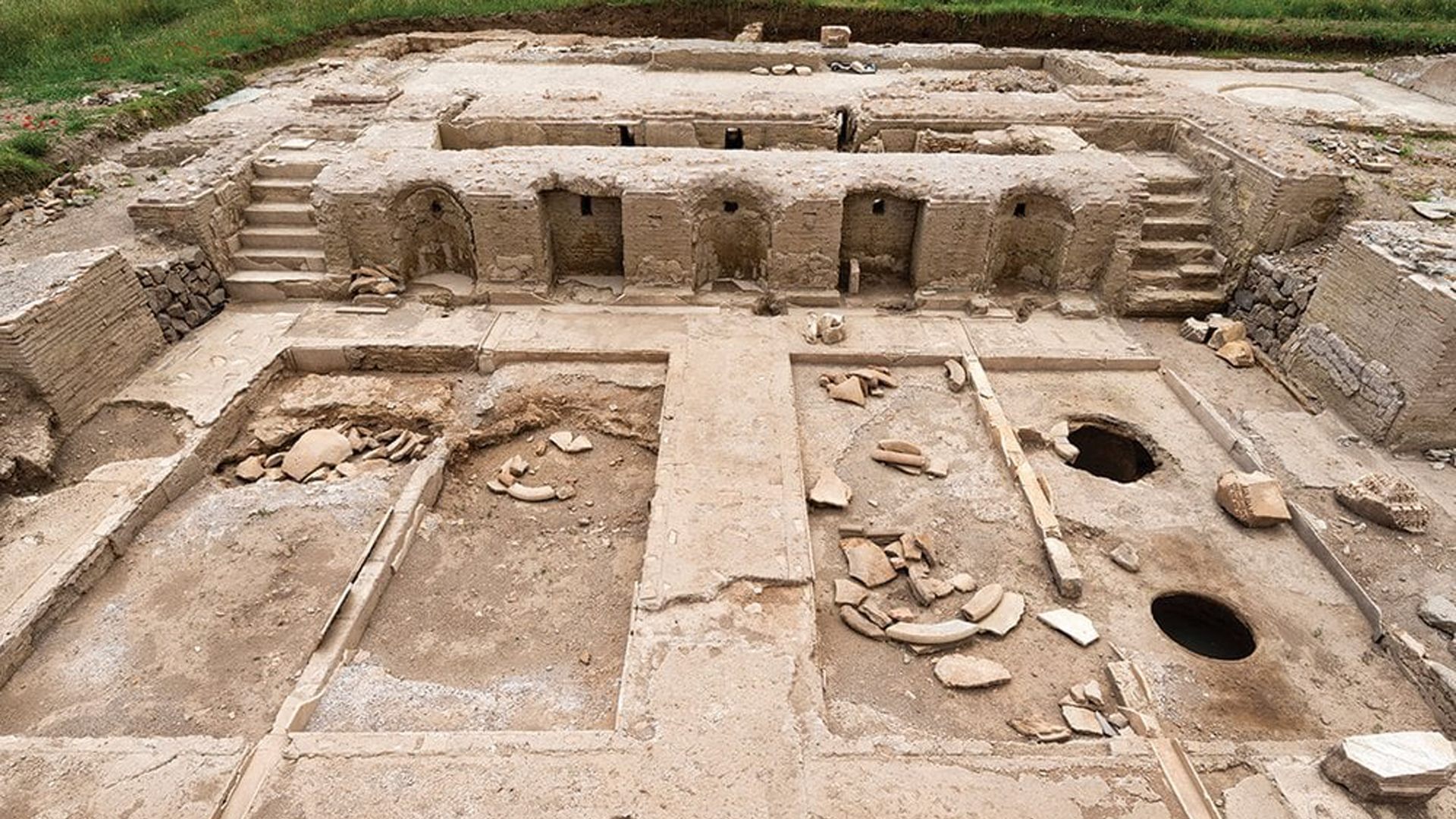The Villa of the Quintili, one of the most impressive excavated ancient Roman villas, lies on the ancient Appian Way southeast of Rome. It covers 59 acres, and was almost a miniature city in its own right – it had a private theater, an arena for chariot races, and a bath complex completely lined with marble.
Dating to the second century AD, the villa’s amenities and origin story have become even more remarkable with the recent discovery of an elaborate winery. While citizens flocked to the Colosseum to watch bloody gladiator and animal duels, the Roman aristocrats preferred watching something more delicate and lavish: winemaking.
Whoever was lucky enough to be invited to the Villa of the Quintilli would have been able to watch the entire wine-making process from dining rooms filled with plentiful banquets. First, they would have seen enslaved men crushing grapes beneath their bare feet in a rectangular area lined with red marble, a symbol of wealth. Then they’d see the crushed grapes be sent to two mechanical presses before resulting in a liquid that flowed into niches, resulting in a dramatic fountain-like effect.

“[The Villa of the Quintilii] was an amazing mini city completed by a luxury winery for the emperor himself to indulge his Bacchic tendencies,” said archaeologist Dr. Emlyn Dodd, assistant director at the British School at Rome, and an expert on ancient wine production, to The Guardian.
The original villa owners were the wealthy Quintilii brothers, who served as consuls of Rome in 151 A.D. They were killed by the violent Emperor Commudus sometime between 182 and 183 AD, who seized their property. Over the next few centuries, emperors took personal ownership of the sprawling villa and modified it to their liking.
“Wine was a huge source of wealth for the Roman elite. They owned vast amounts of land dedicated to viniculture, winemaking, and they were selling it all across the Mediterranean,” Dodd told NBC News. “But at the same time, wine permeates the whole culture and society — it’s used in religion, medicine, in daily life. It was the main beverage when water wasn’t safe to drink.”
Asia London Palomba
Asia London Palomba is a trilingual freelance journalist from Rome, Italy. In the past, her work on culture, travel, and history has been published in The Boston Globe, Atlas Obscura, The Christian Science Monitor, and Grub Street, New York Magazine's food section. In her free time, Asia enjoys traveling home to Italy to spend time with family and friends, drinking Hugo Spritzes, and making her nonna's homemade cavatelli.

